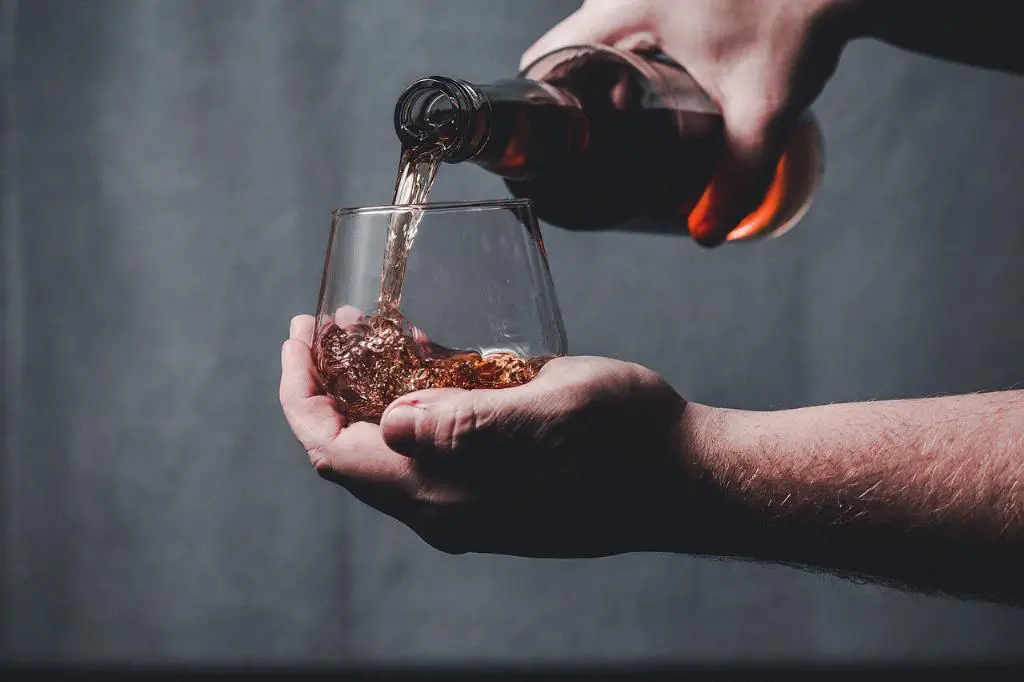When it comes to whiskey, there are a multitude of styles and types to choose from. One of the most popular and beloved varieties is bourbon. However, within the world of bourbon, there exists a distinction that is important to understand – the difference between straight bourbon and bourbon whiskey. While both share similarities in terms of production and flavor profile, there are some key variations that set them apart.
Overview of Bourbon
Bourbon, in its essence, is an American whiskey made primarily from corn. By law, it must be produced in the United States and follow specific guidelines regarding its production process. These guidelines ensure that bourbon maintains a high standard of quality and integrity.
Definition of Straight Bourbon
Straight bourbon is a specific category within bourbon that has its own set of requirements. One crucial criterion is that the distillate must spend a minimum of two years stored in new charred oak barrels. This aging process allows the bourbon to gain its distinctive flavors and aromas, as well as deepen in color. It should be noted that corn whiskey is the only exception, which can be aged in uncharred or used oak barrels.
Definition of Bourbon Whiskey
Bourbon whiskey, on the other hand, encompasses a broader range of bourbons that may not meet the criteria for being classified as straight bourbon. While they still adhere to the general bourbon production process, these whiskies may not have aged for the minimum two-year requirement in new charred oak barrels.
Main Differences Between Straight Bourbon and Bourbon Whiskey
The main difference between straight bourbon and bourbon whiskey lies in the aging process. Straight bourbon has a prescribed minimum aging period of two years in new charred oak barrels, while bourbon whiskey may encompass bourbons that do not meet this requirement. This distinction ultimately affects the flavor profile and characteristics of the whiskey.
Production Process for Straight Bourbon
Ingredients Used
Straight bourbon must have a mash bill that consists of at least 51% corn. The remaining portion typically comprises other grains such as barley, rye, or wheat. The use of corn as the primary grain contributes to the sweetness and smoothness that bourbon is known for.
Distillation and Aging Process
After fermentation, the liquid is distilled to increase the alcohol content. It is then transferred to new charred oak barrels for aging. During this maturation period, bourbon oxidizes and penetrates the wood, extracting flavors, colors, and tannins that contribute to its complexity.
Production Process for Bourbon Whiskey
Ingredients Used
Bourbon whiskey follows the same initial production process as straight bourbon. The mash bill must contain at least 51% corn, and the remaining grains can vary. However, the crucial difference lies in the aging process.
Distillation and Aging Process
Bourbon whiskey can be aged for any length of time in a variety of barrels, including used or uncharred oak barrels. While this flexibility allows for more experimentation and creativity, it means that the resulting flavor profile may differ from that of straight bourbon.
Tasting Notes: Characteristics of Straight Bourbon
Straight bourbon is known for its rich, complex flavors. It often exhibits notes of caramel, vanilla, oak, and sometimes hints of spice. The aging process in new charred oak barrels imparts depth and complexity to the spirit, resulting in a smooth and well-rounded taste.
Tasting Notes: Characteristics of Bourbon Whiskey
Bourbon whiskey can vary significantly in flavor profile depending on its aging process. However, it generally shares some common characteristics with straight bourbon, such as sweetness from the corn, but may have less pronounced oak and caramel notes.
Common Misconceptions Explained
One common misconception is that all bourbon is straight bourbon. This is not the case, as the distinction lies in the specific aging requirements. Another misconception is that bourbon must be produced in Kentucky. While Kentucky is renowned for its bourbon production, bourbon can be made anywhere in the United States.
Pairings and Cocktail Recommendations for Straight Bourbon
Straight bourbon pairs exceptionally well with rich, flavorful foods. The sweetness and complexity of the spirit complement dishes like barbecued meats, dark chocolate, and caramel desserts. Some classic cocktail recommendations include the Old Fashioned and the Manhattan.
Pairings and Cocktail Recommendations for Bourbon Whiskey
Bourbon whiskey, with its diverse flavor profiles, can be enjoyed alongside a range of culinary delights. It pairs well with smoky dishes, grilled meats, and desserts with a hint of sweetness. Popular bourbon whiskey cocktails include the Whiskey Sour and the Mint Julep.
Popular Brands of Straight Bourbon
Some well-known brands of straight bourbon include Maker’s Mark, Woodford Reserve, and Buffalo Trace. These brands are celebrated for their commitment to producing high-quality spirits with exceptional flavor profiles.
Popular Brands of Bourbon Whiskey
Popular brands of bourbon whiskey include Jim Beam, Evan Williams, and Wild Turkey. These brands offer a wide range of expressions, catering to different tastes and preferences.

Conclusion
While both straight bourbon and bourbon whiskey share certain similarities, the distinction lies in the aging process and the resulting flavor profiles. Straight bourbon undergoes a minimum two-year aging period in new charred oak barrels, while bourbon whiskey encompasses a broader range of bourbons that may not meet this requirement. Understanding these differences allows whiskey enthusiasts to fully appreciate the nuances and characteristics of each variety.
